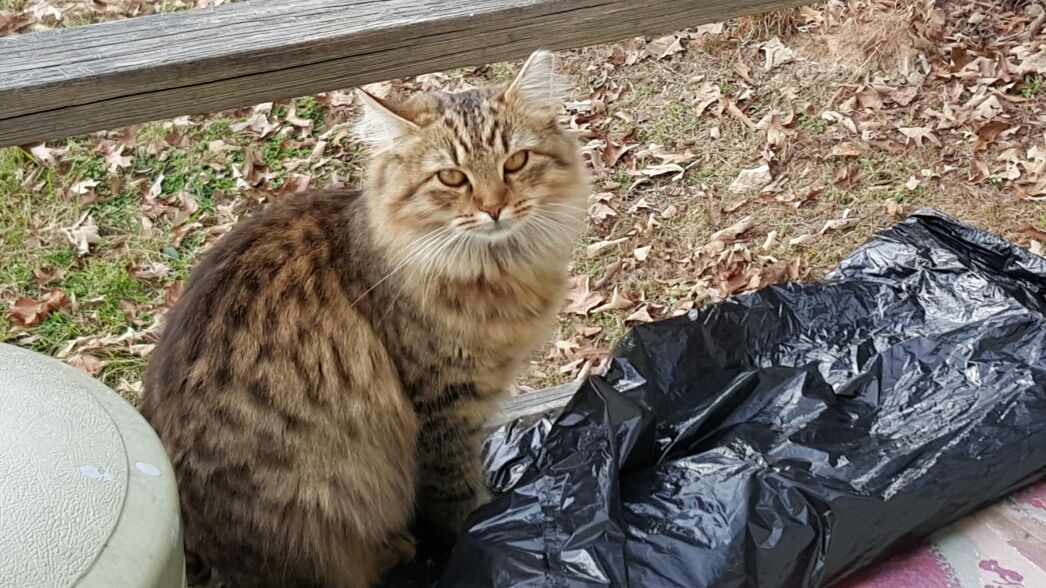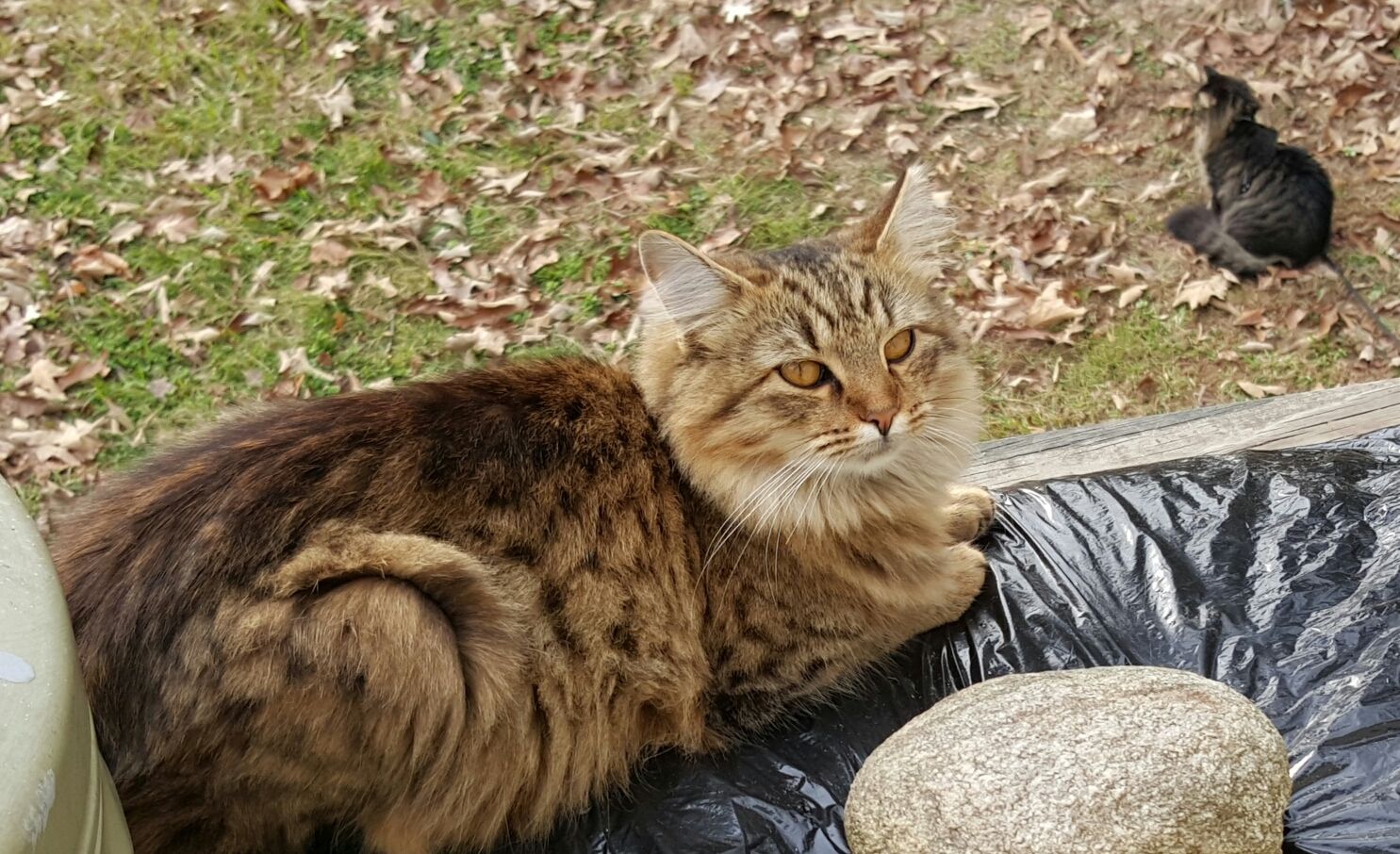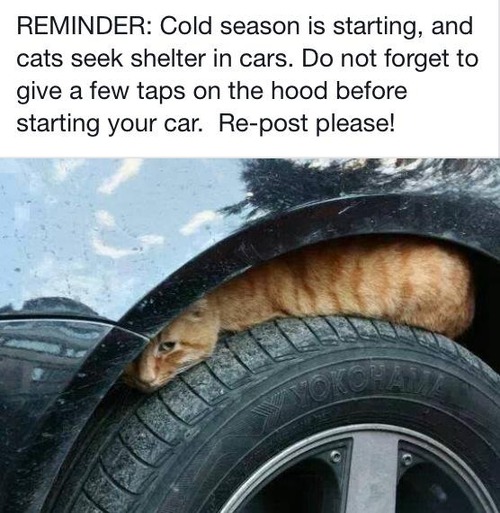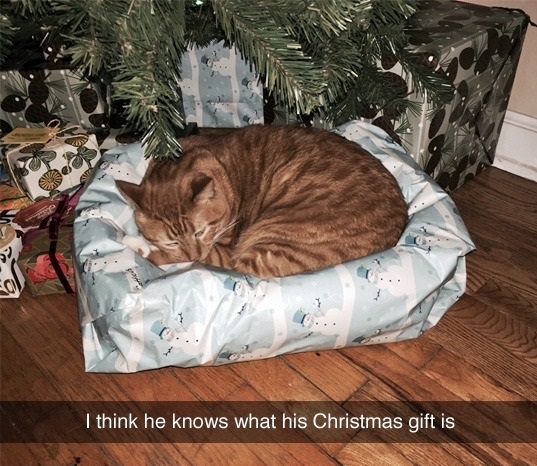Re: to catlovers
Doing the Right Thing
We try hard to do the right thing for every cat who comes through our doors. When Sheila Smith started the sanctuary over 15 years ago with those first seven cats, that usually meant rescuing them from dire circumstances and giving them a safe place to stay. Now that some of our residents are in their teens and have been with us for many years, doing the right thing for them can mean dealing with a wide range of issues.
One of those longtime residents is Pretty Boy. He came to us almost ten years ago as a feral cat who had been hanging around the home of the city manager back when we were working to get a TNR ordinance implemented in Round Rock. Because he was very shy and used to living outdoors, Pretty Boy moved into the Outback. He did well, but stayed up in the far reaches away from people.
Pretty Boy didn't come to the sanctuary alone, though. He was very closely bonded with Tuxie, who we think may have been a litter mate and was in the same feral group when Pretty Boy was trapped. They were often seen hanging out together, and over the years have remained very close.
Like a lot of formerly feral cats, after years living in the Outback and seeing people around every day Pretty Boy grew more comfortable with our presence. He began hanging out on some of the lower shelves and as long as we didn't approach too closely he'd even pose for us and didn't run off to hide.
Eventually Pretty Boy felt comfortable enough around us to relax and take a nap down low in the main part of the Outback instead of sticking to the high shelves - he realized that he could trust us not to touch him.
He'd even come down on the floor and get very close to us when chicken treats were being passed out. Recently we noticed that he was looking much thinner so we trapped him, after trying for several days, and took him in to be checked out. Sadly, the diagnosis was CRI - Chronic Renal Insufficiency (formerly known as CRF). There's no cure, but there are some medications and treatments like daily subcutaneous fluids that can help CRI cats to live longer and feel better. That's not an option for Pretty Boy, though - he just won't stand for being touched, held or medicated.
We confined Pretty Boy in a condo in Uptown where we could keep a close watch over him. He was very unhappy being inside, though. We tried to trap Tuxie to bring in with him, but Tuxie kept eluding us. And even if we got Tuxie inside, we still wouldn't be able to medicate Pretty Boy and they would both probably be pretty unhappy with nowhere to get away when they wanted to. So we thought long and hard, and looked into Pretty Boy's eyes to try and understand what he wanted and what would be best for him.
It quickly became clear to us, and we released Pretty Boy back out into the Outback - his longtime home where he has been happy and lived a wonderful life for so many years. With CRI he's not likely to have any sudden critical health emergency, but rather a slow and steady decline as the disease runs its course. That would be the case even if he were in Uptown. We'll still see him every day in the Outback and will be able to keep a close watch on how he's doing. And he'll still no doubt come running for his beloved chicken treats when we're passing them out.
And most important of all, Pretty Boy is reunited with his lifelong companion, Tuxie. Cats have a sixth sense about these things, and no doubt Tuxie knows his friend is ailing and will stay extra close. CRI is unpredictable, and Pretty Boy may have only weeks or perhaps many months left with us. But for whatever that time is, we are certain that he is in the right place, living life on his own terms. To us, that is "the right thing".
Every cat at the sanctuary has a story. For the ones who have been with us for many years, we get to know their stories very well. And because we know them so well, even when their story takes a painful turn at least we are in a position to make sure that for each day they are with us they have what they need, get what they want, and are able to live the wonderful lives that they deserve, surrounded by love.
http://www.shadowcats.net/read more/doing-the-right-thing.php























